www.sportscollectorsdaily.com/2022-topps-series-2-baseball-info-checklist-boxes-sale/
|
Here's a story I wrote for Sports Collectors Daily about next week's release of Topps Series 2 baseball: www.sportscollectorsdaily.com/2022-topps-series-2-baseball-info-checklist-boxes-sale/
0 Comments
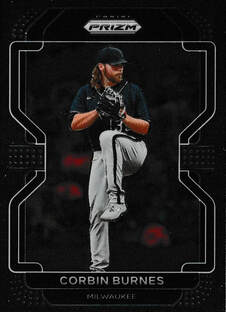
If shiny, colorful cards give you a thrill, then the 2021 Panini Prizm Draft Picks set is the perfect product.
A blaster box of the product runs $29.99. With five packs containing five cards — plus a bonus pack with six Hyper Green & Yellow Prizms — that works out to about 97 cents per card. Blasters also have one Silver Prizm per box, on average. As the name implies, the subject matter for this set includes draft picks and prospects. I am going to start with the bonus pack first, since the card I pulled from that pack was the most exciting to me. It was a card of a young Sandy Koufax during his college days at the University of Cincinnati in 1954. Koufax went 3-1 that year for the Bearcats with a 2.81 ERA. More impressively, he struck out 51 batters in 32 innings. The left-hander would sign with the Brooklyn Dodgers in December 1954 and would make his major league debut the following season. So, it was nice to get a card of “The Left Arm of God.” 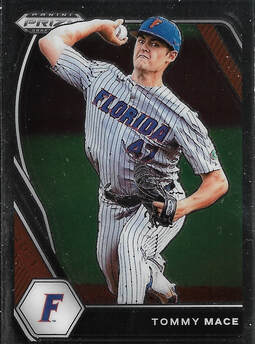
Another nice bonus card was that of Henry Davis, who was the overall No. 1 draft pick in 2021.
The base set contains 220 cards. I pulled 15 base cards and a silver parallel of Maddux Bruns, a pitcher who has quite a name to live up to. Yes, he is named for Hall of Fame pitcher Greg Maddux. Could have been worse. His parents could have been big fans of Jarrod Saltalamacchia, for example. There were three other parallels: Green Pulsar cards of Emmet Sheehan and Joe Mack, and a Blue Donut Circles card of JT Schwartz, numbered to 25. Fun fact about one of the cards I pulled. The bio writer for Panini notes that if Jake Miller — who was drafted by Cleveland in 2021 — makes it to the major leagues, he will become the third Jake Miller to reach the big show. The others were an outfielder who played three games for the Pittsburgh Pirates in 1922, and a pitcher who spent eight seasons in Cleveland (1924 to 1931) and one season with the Chicago White Sox (1933). Great research. 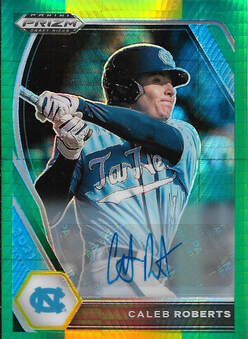
This was a nice box because there was an autograph card inside — a Green & Yellow Prizm card of Caleb Roberts, a fifth-round pick of the Diamondbacks last year out of North Carolina.
Granted, it was a sticker autograph — I prefer on-card signatures — but it was a bonus to receive one at all. There were five different inserts in the blaster that I bought, starting off with a Prospects card of Alexander Canario. You may have seen Canario’s great catch in the outfield for the Tennessee Smokies on Sunday, where he made the grab and ran through the wall. Prospects has 15 cards, and Canario is one of them.
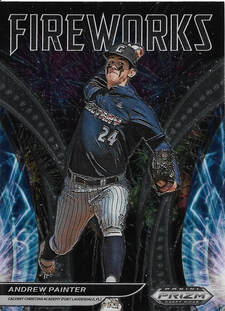
Crusade is a returning insert with 15 subjects, and I pulled one of Izaac Pacheco, the Detroit Tigers’ second-round pick last year.
Another insert from last year is the 15-card Fireworks subset, and I pulled pitcher Andrew Painter. The Phillies prospect, who is 6-foot-7, has a 1.38 ERA in eight starts this season and 60 strikeouts in 32.2 innings. And I am not sure about the bios of the other Fireworks subjects, but Painter’s is certainly over the top: “Just like the fireworks of various shapes and sizes light up the sky during a display, Painter illuminates the strike zone with a sparkling array of options.” Wow. Draft Standouts contains 15 subjects, and I pulled Shawn Goosenberg, who was drafted by the Chicago White Sox out of Northwestern.
The final insert card was from the 15-card Thunderstruck subset, the disc jockey-sounding name of Joe Rock. The former Ohio University pitcher was 10-7 for the Bobcats in two seasons, including an 8-3 mark with a 2.33 ERA as a junior before he was drafted by the Rockies. And that bio again: “Batters are no longer shocked when Rock holds them without a knock …”
I need to apply to write bios. I have puns that can make you groan, too. All kidding aside, the 2021 Panini Prizm Draft Picks set has plenty of shine and colors. If you enjoy collecting cards of players who could make an impact down the road, this is the perfect set to collect. Here's a story I wrote for Sports Collectors Daily about the 2022 Topps Heritage high number set, which is due out in August:
www.sportscollectorsdaily.com/2022-topps-heritage-high-number-set-continues-1970s-nostalgia/ Here's a story I wrote for Sports Collectors Daily about the trolley baseball advertising collection of Jeff Martin that is being sold in the latest SCP Auction:
www.sportscollectorsdaily.com/baseball-advertising-collection-at-auction-traces-games-history-of-endorsements/ 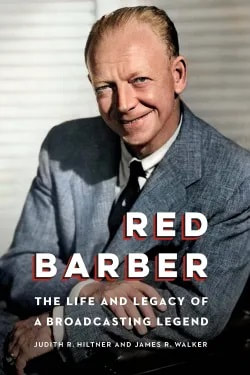
Like many youths in 1940s Brooklyn, my father listened to Red Barber calling Dodgers games, paying rapt attention to the radio.
Walter Lanier “Red” Barber invented the template for impartial sportscasters. He was never a shameless homer during his 33-year career on radio and television, although listeners knew he favored the team he was broadcasting (as play-by-play man for the Cincinnati Reds, Brooklyn Dodgers or New York Yankees). But the Hall of Fame broadcaster had credibility because he approached the game as a reporter, giving the facts while avoiding embellishments. “He used to announce the road games off the ticker tape,” Richard D’Angelo, now a month shy of his 90th birthday, told me this week. “He made it sound like he was there. “He was very calm and very quick.” What you heard from Barber was the unvarnished truth. He also could set a scene for radio listeners, painting word pictures with his stark, compelling descriptions and his folksy sayings. It was quite a combination that he used to great effect broadcasting baseball, college and professional football. His direct, no-nonsense approach also served him well during his nine years as director of sports for CBS Sports. Barber’s long, prolific career as a broadcaster, and later, as a writer, is the subject of a new biography by Judith R. Hiltner and James R. Walker. Red Barber: The Life and Legacy of a Broadcasting Legend (University of Nebraska Press; $36.95; hardback; 496 pages) is a thoroughly researched work with rich detail that draws upon the Red Barber Collection of papers at his alma mater, the University of Florida. The work also relies on other manuscripts, audio and visual sources, interviews, oral histories and information from more than 80 articles and books. That provides a scholarly and eclectic mix that is enhanced by the authors’ clear prose. Hiltner and Walker, the husband-and-wife writing team for this project, hold teaching positions at Saint Xavier University in Chicago and both are independently accomplished. Hiltner is professor emeritus of literature and languages and has written critical and biographical studies of Phillip Freneau, known as the poet of the American Revolution; and Deborah Sampson, a woman who disguised herself as a man to fight during the Revolutionary War; and Herman Melville, the author of “Moby-Dick.” Walker, professor emeritus of communication, wrote 2015’s Crack of the Bat: A History of Baseball on the Radio; and co-wrote Center Field Shot: A History of Baseball on Television with Robert V. Bellamy Jr. in 2008. “ … We began to think about this project as something to do together,” Hiltner told the Pandemic Baseball Book Club, an interview featured on Ron Kaplan’s Baseball Bookshelf. “It’s really enriched our retirement years.”
Barber had his own lexicon of sayings, called Barberisms: “Tearing up the pea patch,” “sitting in the catbird seat,” “rhubarbs,” “slick as okra,” and “the bases are FOB” (full of Brooklyns). And famously, his “Ohhh, doctor” call when Al Gionfriddo robbed Joe DiMaggio of a home run during Game 6 of the 1947 World Series — arguably Barber’s most animated moment behind the microphone.
When Roger Maris hit his 61st homer of the season on Oct. 1,1961, Barber was handling television duties for the Yankees on WPIX-TV. When Maris connected, Barber let the fans tell the story. “There it is,” and then, after a long pause to allow his viewers to absorb the crowd’s delirium, Barber said, “Sixty-one. Five thousand dollars, somebody” (a reward that was offered to the person who caught the ball — Sal Durante.). That understated style of announcing was also made famous by Barber’s most famous protégé, Vin Scully, who called Dodgers games for 67 seasons before retiring after the 2016 season. Other broadcasters have also followed that example, to their credit. Barber’s gift for storytelling was his ability “to take the local and make it universal.” “He could transform Brooklyn into everyone’s hometown and Ebbets Field into everyone’s own backyard,” Chuck Yarborough, a professor of Southern history at Mississippi University for Women, told the authors in a 2019 interview. Barber honed his skills when he began announcing college football games at Florida in 1930. Barber is certainly the university’s most prominent broadcasting figure. There have been others through the years, too: Otis Boggs, the original “voice of the Gators” from 1940 to 1981; longtime WRUF sports director Larry Vettel and program director Harry Guscott; and 90 Rock veterans David Lowe and Chris Maurer (the latter making her mark at CNBC Radio for more than three decades).
After the University of Florida, Barber would announce games for the Cincinnati Reds before coming to Brooklyn. He would leave during the 1950s for the Dodgers’ heated World Series rivals, the Yankees.
Hiltner and Walker take an interesting approach in introducing the reader to Barber, using his given first and middle names and nickname to show “the dominant strands” of his personality. They write that “Walter” signified his ambition, “aiming to win but competing only by strictly following” the rules. “Lanier” brings out the broadcaster’s love of literature, symphony and history, among other subjects, which brought out the humanist side of his personality. “He enjoys the challenge of mulling life’s deepest questions and formulating tentative answers,” the authors write. “Red,” meanwhile, is “the fun-loving performer” who enjoyed participating in minstrel shows and telling stories to his radio and television audiences. Granted, the minstrel shows were in blackface and would not pass muster today, but his life was shaped by smalltown values from the Deep South. That’s not an excuse; it is simply what he did. But Barber was highly critical of his hometown when it came to its treatment of Jackie Robinson. A 1946 incident, when Sanford city officials scrapped an exhibition game involving Robinson and the Montreal Royals — the Dodgers’ minor league affiliate — was instructive. Barber, later reacting to officials telling the team to Robinson out of town,” spoke disparagingly” about the city, calling it “as red necked a town as you’ll ever find.” Being from the South, Barber originally struggled with the idea of Jackie Robinson breaking the color barrier. But, the authors note, Barber took a page out of legendary umpire Bill Klem’s book, to simply “umpire the ball.” For Barber, that translated into “broadcasting the ball,” regardless of who was hitting or catching it. Barber knew that his listeners would be waiting to hear “what (he) said as well as what (he) didn’t say.” Tom Villante, who was Barber’s producer when Robinson made his major league debut on April 15, 1947, at Ebbets Field, told the authors that the announcer “faced a dilemma” that day. “How do I handle it? I’m going to handle it like I handle any other player,” Villante quoted Barber as saying. “I don’t say he’s an Italian, I don’t say he’s a Greek. I don’t say he’s Polish, and I’m not going to say Jackie’s a Negro.” “Red referred to him as a person,” Villante told the authors. Ultimately, Barber would become friends with Jackie and Rachel Robinson.
The authors note that Barber “bought” his signature “catbird seat” saying after losing a penny ante poker came with a friend, Frank Koch. It would later become the title of more than 550 weekly columns Barber wrote for the Tallahassee Democrat between 1972 and 1982.
These are some of the nuggets of information that make this biography so endearing. The authors squash the old story that Barber was fired from the New York Yankees because of a Sept. 22, 1966, television broadcast, when he told viewers on WPIX that there were only 413 fans in attendance. “But that was not why he was fired,” the authors write. “By then the decision to fire Barber had already been made.” Yankees executive Michael Burke, who fired Barber four days after that game, was the villain in the “413” story, which became “one of the enduring Yankees myths.” Burke would later say that Barber was fired because he was “giving us a terrible time in the broadcast booth,” while squabbling with fellow broadcaster Phil Rizzuto and “going out of his way” to embarrass another Yankees broadcaster, Joe Garagiola, on the air “and make him look stupid.” “But Burke’s justification for firing Barber rarely saw the light of day,” the authors write. “The press portrayed Barber as the heroic victim and his firing as another example of CBS mismanagement.” CBS had bought an 80% interest in the team from Dan Topping and Del Webb on Nov. 2, 1964. Coincidentally or not, the Yankees, who had won 29 pennants from 1921 to 1964, would not appear in the World Series again until 1976.
There are a few things to nitpick in this work, and admittedly, some of it is probably personal bias on my part.
For example, the authors reference a Pete Norton newspaper column from 1930 praising Barber’s announcing skills but referred to the publication as the Tampa Bay Times. Until Jan. 1, 2012, the Tampa Bay Times was known as the St. Petersburg Times. Yes, sour grapes on my part, since I worked at the rival Tampa Tribune that was bought out and closed down by the Times in May 2016. But referring to that paper as the Tampa Bay Times is like saying the Los Angeles Dodgers — and not the Brooklyn Dodgers — won the 1955 World Series. The franchise did, of course, but you get the idea. Enough ranting on that point, although there is at least one more instance of a reference to the Tampa Bay Times. The authors also note that when Barber arrived in Brooklyn, the Dodgers “had exactly one pennant and no World Series win to their credit.” While they correctly mention the 1920 Dodgers, the authors forgot about the 1916 Brooklyn squad that won the National League pennant but lost to the Boston Red Sox. It could be argued that the team was also called the Robins in 1916 in honor of manager Wilbert Robinson, but even The New York Times and The Brooklyn Daily Times referred to the team as the Dodgers in 1916, according to online newspaper records. The names Robins and Dodgers were interchangeable from 1914 to 1931, when Robinson managed the team. And finally, Reds owner Powel Crosley is referred to as “Powell,” which is a common error. But honestly, finding three minor items in a nearly 500-page book does not diminish the thorough job done by Hiltner and Walker.
After his forced retirement from baseball broadcasting, Barber found a new outlet for his creativity — writing.
He wrote approximately 240 columns for the Miami Herald from 1967 to 1971 under the heading, “The Old Redhead.” No longer forced to remain neutral, Barber could offer an opinion — and he wasn’t shy about it. “His strongest pieces … were based upon on-site interviews or compelling current events,” the authors write. “They remind readers that Barber was at his best as a writer when he combined perceptive commentary … with his gifts as a play-by-play radio reporter who brought a scene to life for listeners who could not see it except through the lens of Barber’s keen descriptive powers. As he aged, Barber returned to radio on NPR’s “Morning Edition,” visited for several minutes every Friday. That introduced Barber to a new audience. He wrote six books, contributed articles to Reader’s Digest, and joined NBC broadcasters Curt Gowdy (another Barber protégé) and Tony Kubek during a 1973 Monday night game from Pittsburgh. “Barber seemed to transition into a comfortable retirement, seeking neither fame nor fortune but receiving enough of each,” the authors write. In addition to writing about Barber’s professional career, Hiltner and Walker dig into the broadcaster’s personal life. They note Barber’s struggle with balancing his growing fame as a broadcaster with his personal life at home. Barber also had to accept the news of his only child, Sarah, coming out as a lesbian, and his later-life role as a caretaker for his wife, Lylah, who had Alzheimer’s disease Lylah Barber’s 1985 memoir, “Lylah,” also provides unique perspective about her courtship with Red Barber and their family life. And the authors provide unique perspective about Barber’s role as a licensed Episcopal lay reader. There is so much to cover, and so many names and events — Walter O’Malley, Branch Rickey, Mel Allen, Connie Desmond, Garagiola, the 1951 playoff game between the Giants and Dodgers, the 1940 NFL championship game, the 1935 Notre Dame-Ohio State college football game, and others. The authors address them all. The best compliment ever paid to Red Barber might have come from another broadcasting pioneer, Graham McNamee. At the 1936 World Series, McNamee watched Barber call the game from the box seats above the press box at the Polo Grounds (where announcers worked at the time). Barber, “fully engaged” after taking over the announcing duties in the fourth inning and working solo, felt a firm hand grab his elbow after a few innings, the authors write. It was McNamee. “Kid, you’ve got it,” McNamee said. I feel the same way about the work by Judith Hiltner and James Walker in this biography. They’ve got it. 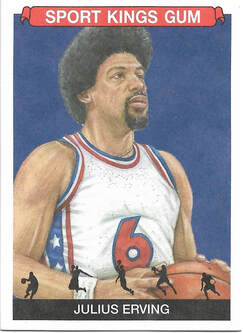 Here’s some sage advice: If you are going to buy a blaster box of Sportkings Volume 3, get ready for multiple cards. To be honest, with prices going up (including blaster boxes) it’s not a great idea to put duplicates in a blaster. But that’s what happened. The silver lining is that I did pull a memorabilia card, so it all evens out. Volume 3 is the third configuration of Sage’s multisport product line. Love the idea and the chance to have cards of legends in baseball and other sports. The card numbers in Volume 3 run from No. 87 to No. 122. A blaster contains five packs, with five base cards and a mini per pack. There is also a bonus pack that has two base card parallels and a bonus card. The bonus could be one of several items: a memorabilia card, an on-card autograph, a Sportkings or Legends memorabilia card — good grief, it is spelled “Memorbilia” on the blaster — an icon cut signature, 1/1 sketches by artist Gary Kezele or a Grand Patch card. Collectors also have the chance to find a Jackie Robinson autograph. 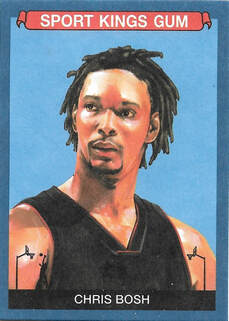 The artwork on the cards is very nice, capturing the essence of each sports legend. The blaster I bought had 17 base cards, including two of Julius Erving in different poses. One is a shot of Erving with basketball in hand, apparently scanning the court. The other portrays Dr. J in the process of dunking. Those were the only base basketball cards. Baseball is represented by Greg Maddux, Gaylord Perry, Mike Piazza and Carl Hubbell. The NFL cards feature three quarterbacks — Jim McMahon, Phil Simms and Boomer Esiason — and center Dwight Stephenson. There were two auto racing stars in the blaster — Mario Andretti and Matt Kenseth. Other cards include hockey pioneer James Creighton, artistic gymnastics Olympic gold medalist Gabby Douglas, 19th century cycling star James Moore, pro wrestler Adam Scherr and arm wrestler Devon Larratt. The bonus pack yielded a pair of stars — basketball Hall of Famer Chris Bosh and Finland’s greatest athlete, nine-time Olympic gold medalist Paavo Nurmi. On the downside, there were seven doubles and a triple of Larratt. I pulled five mini cards—Stevenson, Simms, Larratt (of course), Pirates reliever Kent Tekulve and New Zealand rugby star Zinzan Brooke.
The payoff for the blaster — and there is always some kind of hit, which is nice — was a uniform swatch card of Esiason. Nice looking card. So, there are some positives and negatives to buying cards from the set. The checklist certainly includes some of sport’s greatest stars. And the hot card is a plus. If you are not building the set, then duplicate cards will not concern you. Here is a story I wrote for Sports Collectors Daily about the 2022 Bowman Chrome baseball set, which will be released in September:
www.sportscollectorsdaily.com/2022-bowman-chrome-heavy-on-prospects-autographs/ 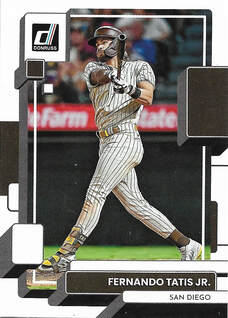 I find it difficult to have much warmth for the 1988 Donruss baseball set. It was overproduced and its design was not earth-shattering. But that’s my opinion. The junk wax era was gaining momentum, and billions of cards (it seemed) were dumped on the market that year and into the mid-1990s. That being said, Panini decided to bring back that 1988 nostalgia with its 2022 Baseball product. Crazy, isn’t it? The original came out 34 years ago. Does that make some of you feel old? It should. There are some good features in the 2022 set. The first 30 cards of the 280-card set are the venerable Diamond Kings, and it has a very creative design. The left half of the card front shows the player in action, while the right-hand side is a small inset of the player, also in action. 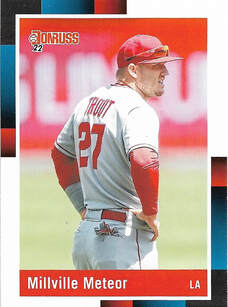 Rated Rookie cards (No. 31-80) feature the familiar blue logo that was synonymous with Donruss introducing new players. Base cards (Nos. 81-230) showcase current stars and former greats, while Retro 88 (No. 231-280) pays tribute to the 1988 design (partially) with the red, blue and black squares in the top left-hand corner and the bottom right-hand corner. As usual, I bought a blaster box. Those contain six packs, with 15 cards to a pack. And yes, there are variations, too. I pulled 36 base cards and a variation card of Kyle Schwarber that reads “Waltham” on his nameplate. There was also a base variation of Juan Soto (No. 225), where the card number is in the upper right-hand corner. I also found a red parallel of Tim Anderson numbered to 2022, and nine Purple Holo parallels. There were 13 Retro 88 cards in the box I opened, plus a Mike Trout variation that refers to him as “Millville Meteor” on the nameplate. 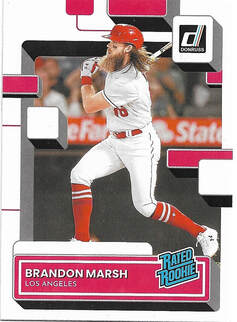 I pulled seven Diamond Kings, plus an Independence Day parallel of Joey Votto. The card features blue stars in the background. There was also a Holo Purple parallel of Ketel Marte. As far as first-year players go, I found 10 Rated Rookie two Purple Holo parallels and a yellow parallel of Oneil Cruz. Interesting first name, and it begs for an apostrophe. There was also a shiny parallel of Elly De La Cruz. I’ve already commented on the Diamond Kings design (liked it) and touched on the Rated Rookies (it’s OK, I guess). Now, for the base set. The card front sports a very busy design, with boxes all over the place. The Donruss logo anchors the upper left-hand corner, and the boxes utilize one of the major color schemes of the player’s team. The player’s name plate is in white capital letters with a background of the team’s color scheme. 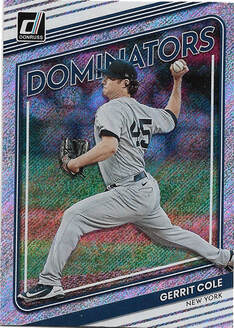 The photos are colorful action shots, but they appear to be cramped by the intrusive frame surrounding them. Some of the players’ feet are cut off, for example. The card backs are clean and use a cropped shot of the front photo that takes up a third of the frame. The type on the player’s nameplate appears larger than the one on the front and is also white block letters against a team color. There are either four or five lines of biographical type. There are no vital statistics, but there is a two-line stat box. One shows the player’s 2021 numbers, while the second line shows career stats. The backs for the Diamond Kings are bolder. There is no art, but the player’s name is in large white block letters and there is a generous biographical sketch. 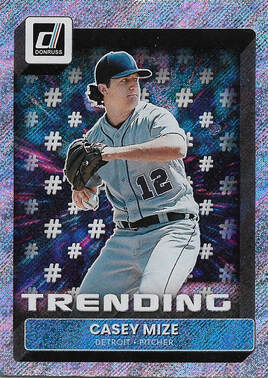 The backs for Rated Rookies follows the pattern of the base set with cropped photographs that lend themselves to a horizontal format. Underneath the player’s nameplate is a short bio. The Retro 88 card backs include a white box with white text framed by a large olive-green box that takes up about 75% of the back. The remaining 25% has Panini’s disclaimer and logo. I pulled five inserts from the blaster box, and they are foil heavy. Unleashed is a colorful 20-card insert that features the player in action against the backdrop of a snarling bear. The set features established stars, up-and-coming players and Hall of Famers. I pulled Ryne Sandberg and Mike Trout. 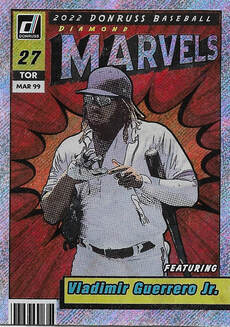 Dominators is a 12-card set that is familiar to Donruss baseball collectors. Players are heralded for dominating performances. I pulled a Gerrit Cole card. Trending features 12 cards of players who have come to the forefront of MLB. I pulled a card of Detroit Tigers pitcher Casey Mize. And Diamond Marvels is a 10-card set that assumes a cartoon-like look at today’s stars. It gives off a comic book kind of vibe. The card I found from this subset was Vladimir Guerrero Jr. Donruss was "marveling" at Guerrero's performance at Fenway Park last June, when the slugger hit home runs in four consecutive games at the hallowed stadium. The 2022 Donruss set does capture the essence of the 1988 set. If that’s your idea of retro, more power to you. Here's a story I wrote for Sports Collectors Daily about the Baseball Card Hall of Fame, now in its fifth year. Voting has begun. See how you can vote:
www.sportscollectorsdaily.com/fifth-year-of-baseball-card-hall-of-fame-voting-in-progress/ Here's a story I wrote for Sports Collectors Daily about a cache of 1933 and 1934 Goudey cards that belonged to a former employee of the company. The man's grandchildren sold some of them in November but found more in an attic safe, so those cards will be sold in Heritage Auctions' July sale:
www.sportscollectorsdaily.com/goudey-baseball-card-find-heritage-auctions/ Here's a story I wrote for Sports Collectors Daily previewing the 2022 Bowman Sterling baseball set, which will be released in mid-August:
www.sportscollectorsdaily.com/2022-bowman-sterling-places-emphasis-on-rookies-prospects/ Here's a story I wrote for Sports Collectors Daily about an upcoming Heritage Auctions sale, which will include more than 50 W600 Cabinet cards from the early 1900s:
www.sportscollectorsdaily.com/stack-of-w600-cabinet-cards-on-block-in-heritage-auctions-sale/ Here's a story I wrote for Sports Collectors Daily about eBay's latest expansion of its Authenticity Guarantee. eBay will partner with PSA for authenticating high-end graded cards:
www.sportscollectorsdaily.com/ebay-expands-authenticity-guarantee-service-partners-with-psa-on-high-end-graded-cards/ |
Bob's blogI love to blog about sports books and give my opinion. Baseball books are my favorites, but I read and review all kinds of books. Archives
September 2023
Categories |
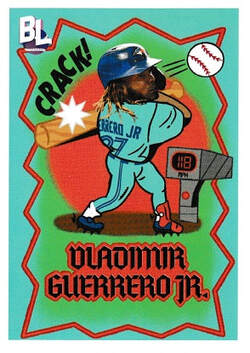
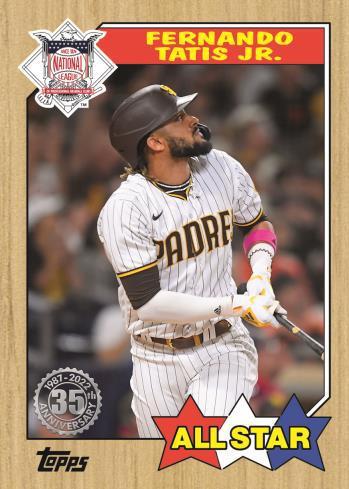
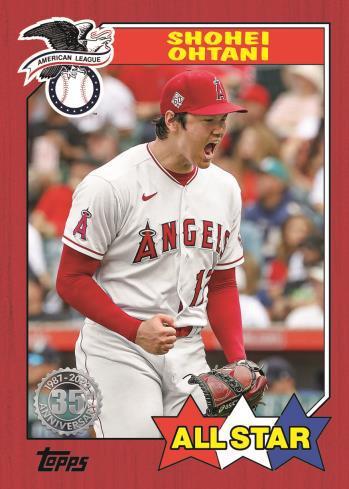
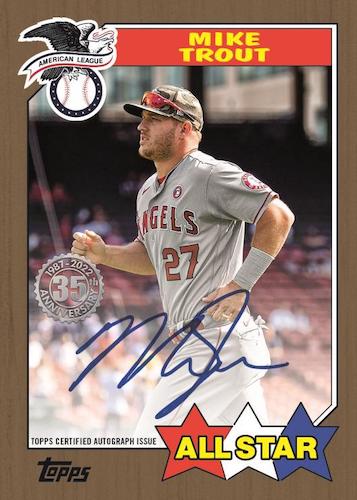
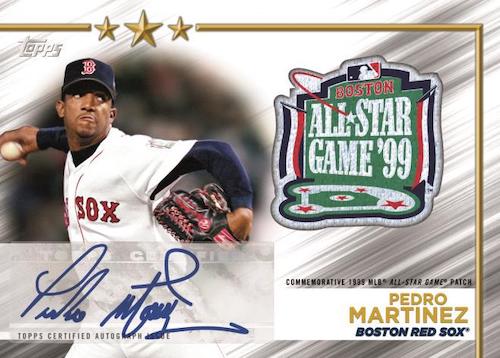
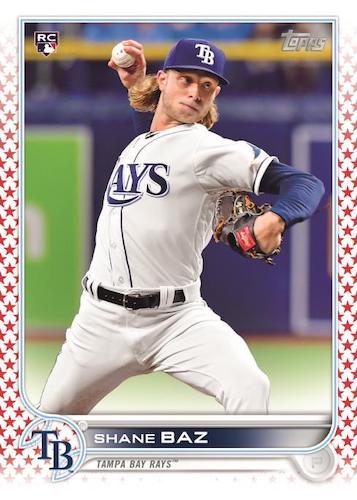
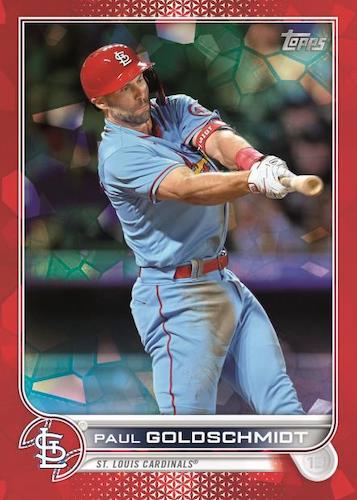
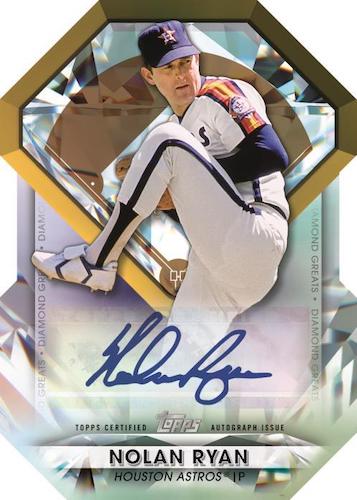

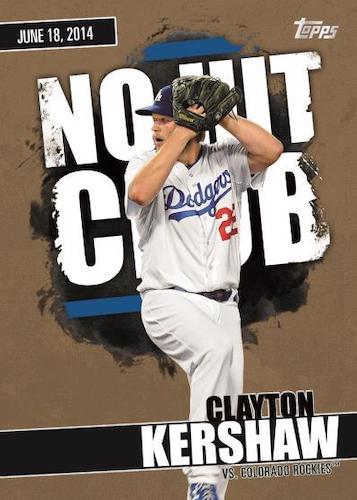
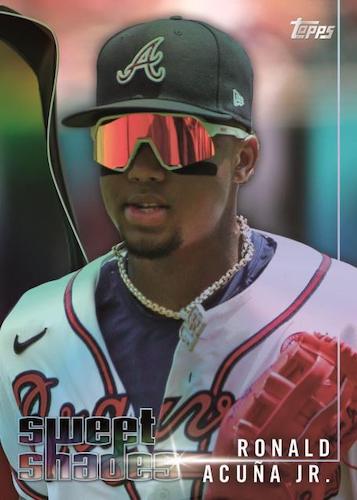
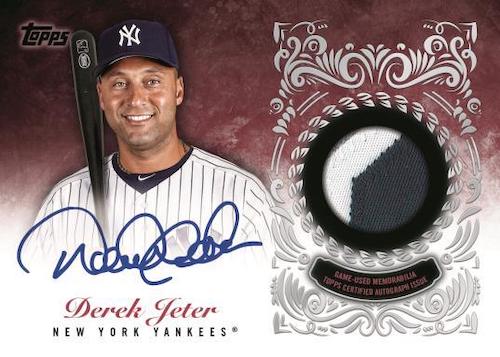
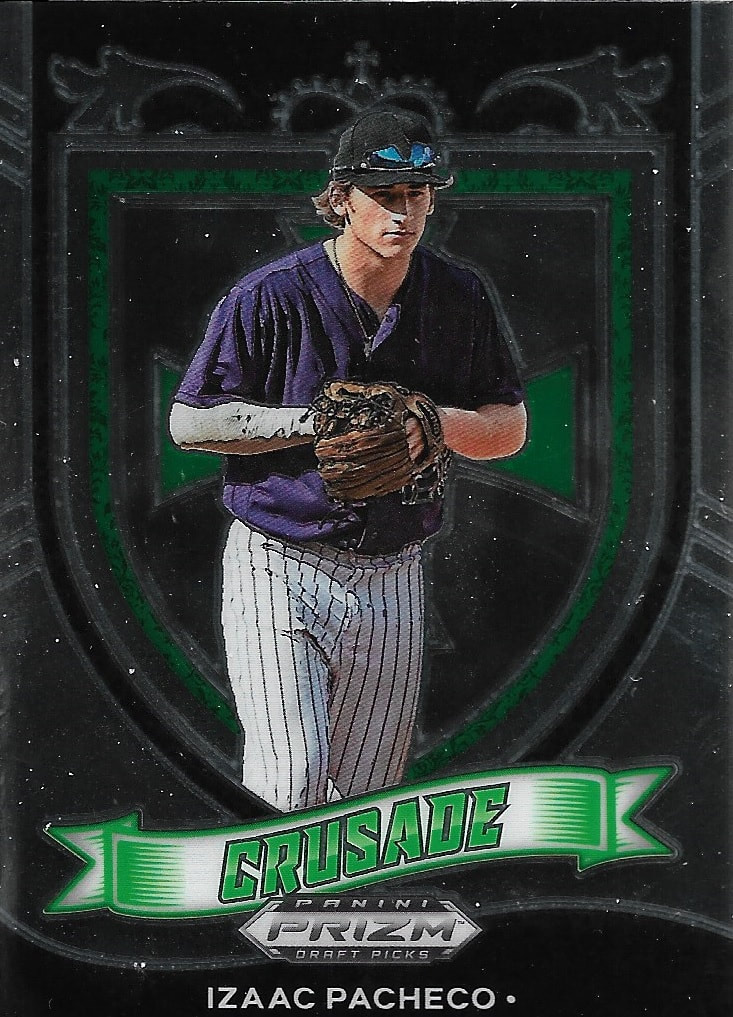
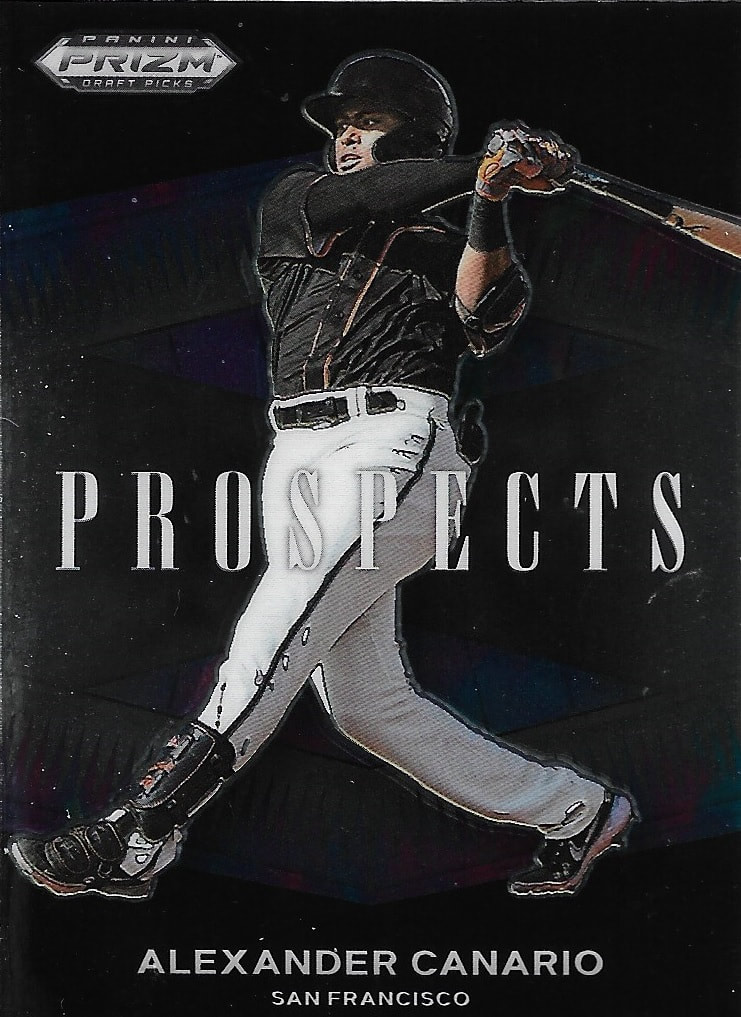
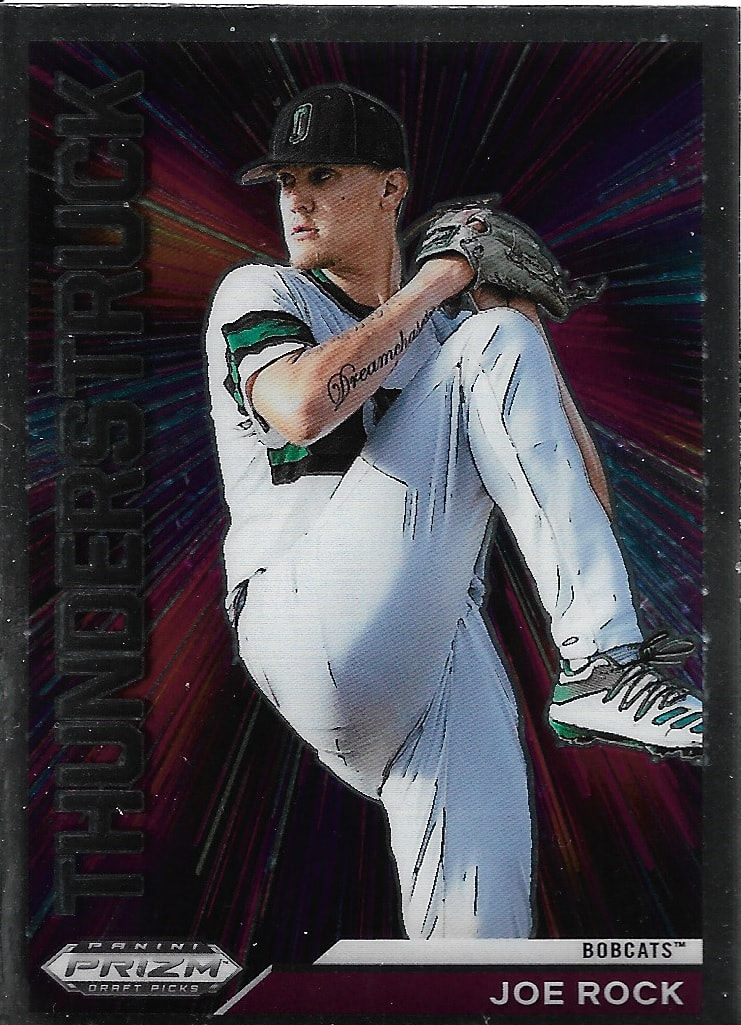
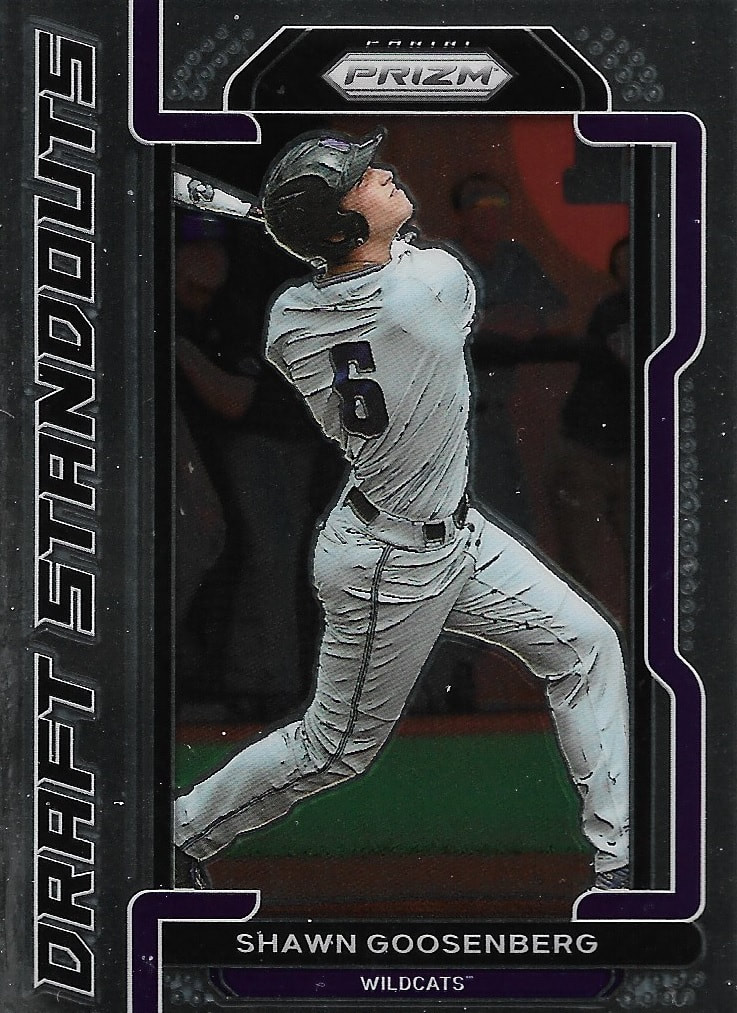
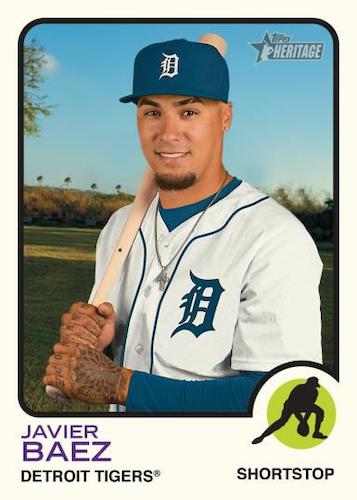

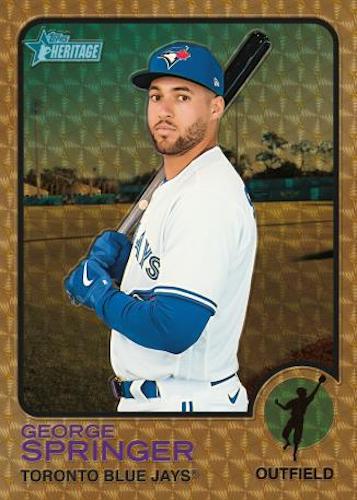
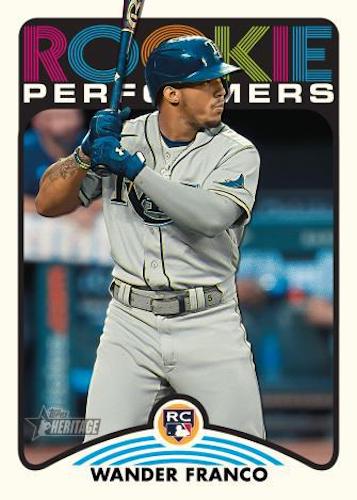
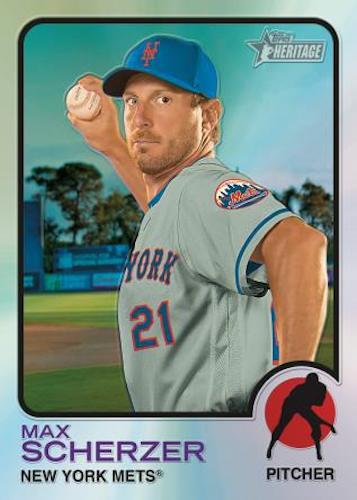
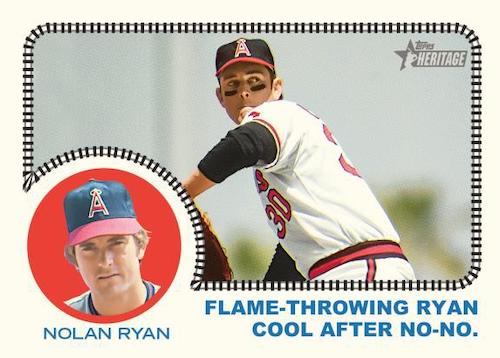
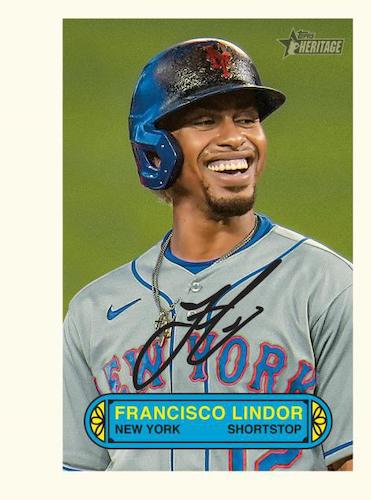
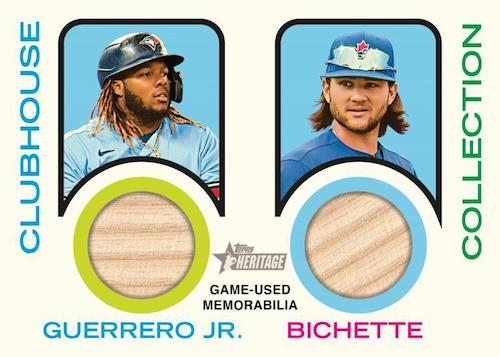
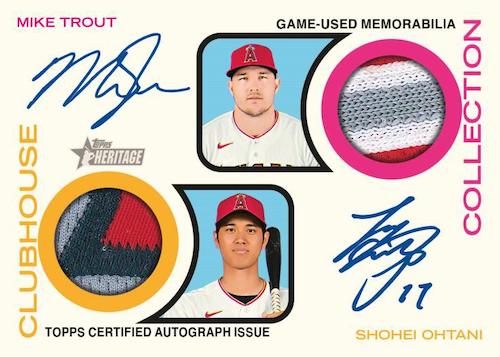
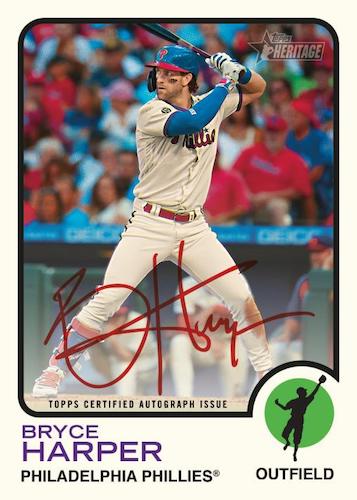
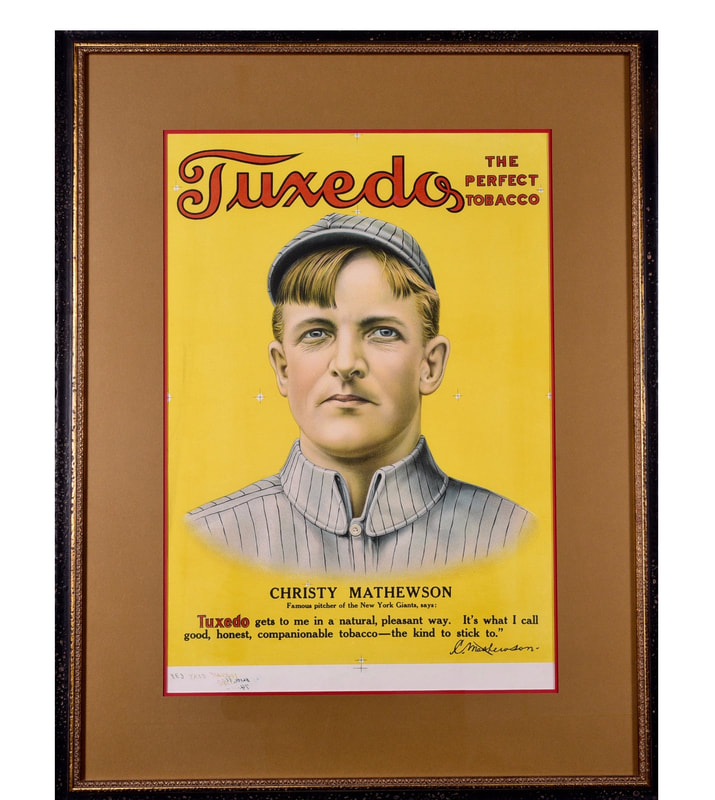
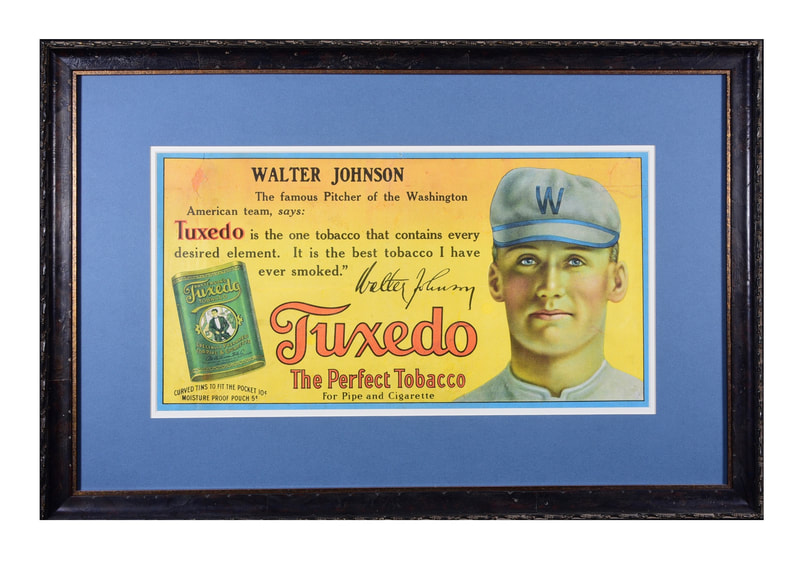
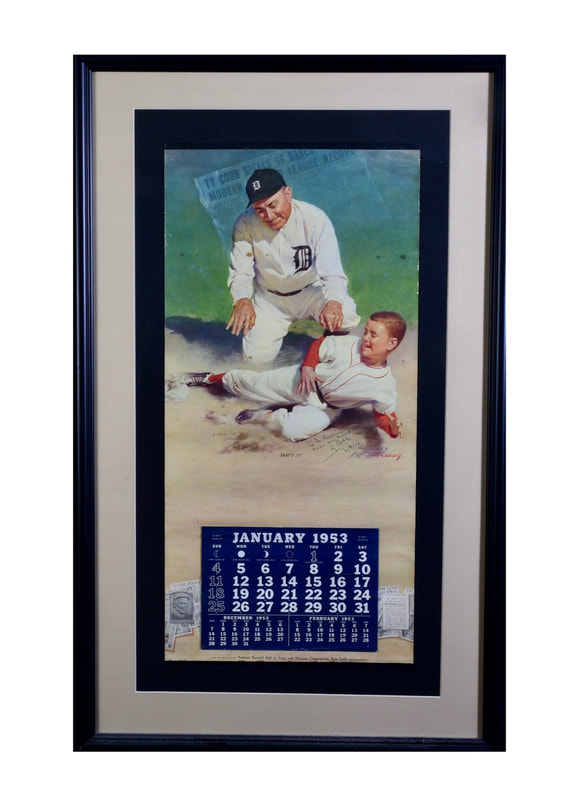
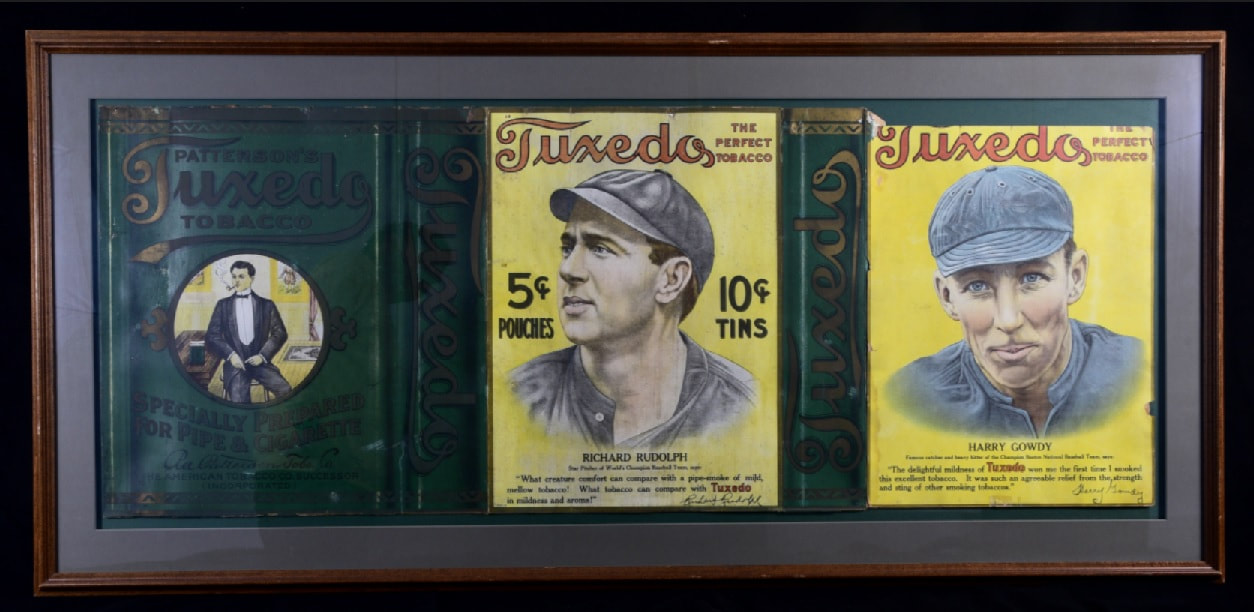
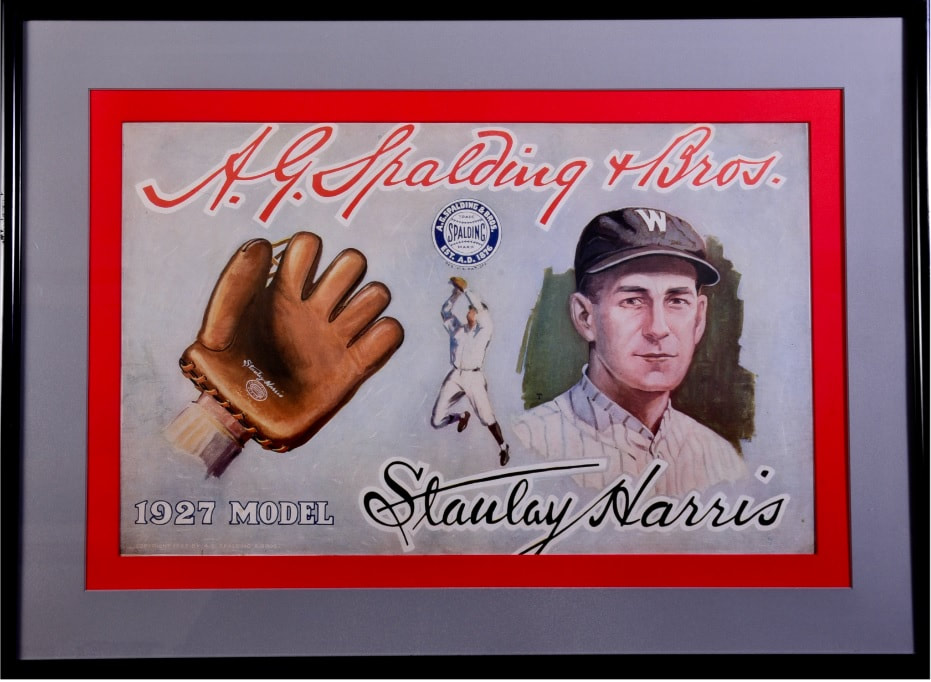
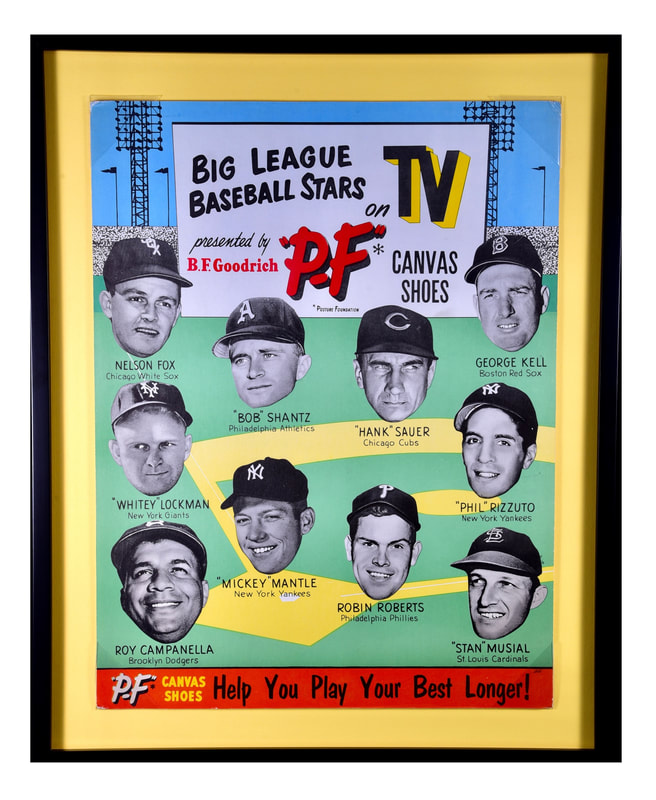
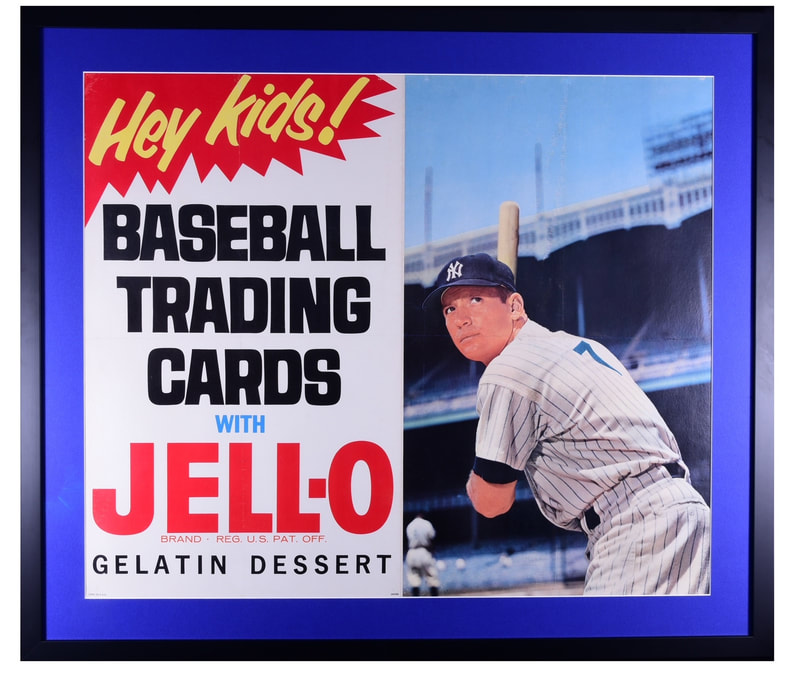
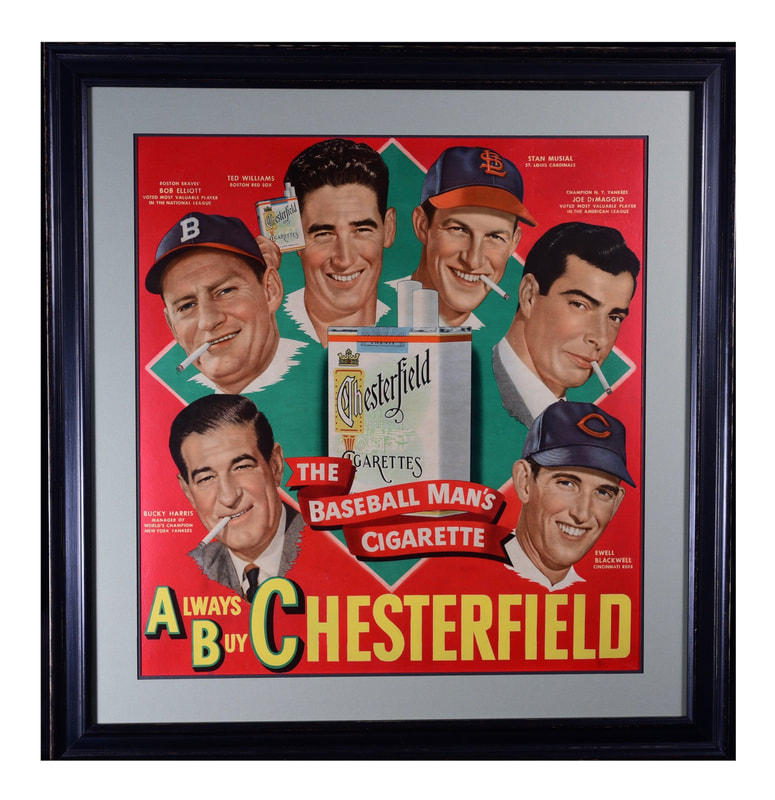
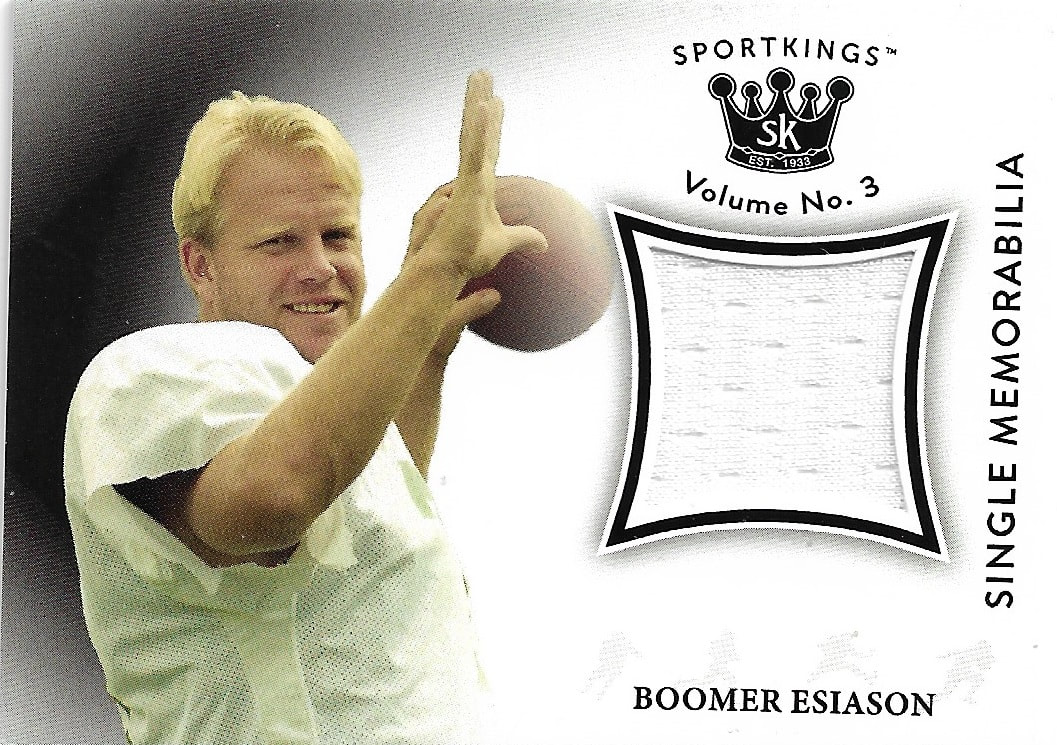
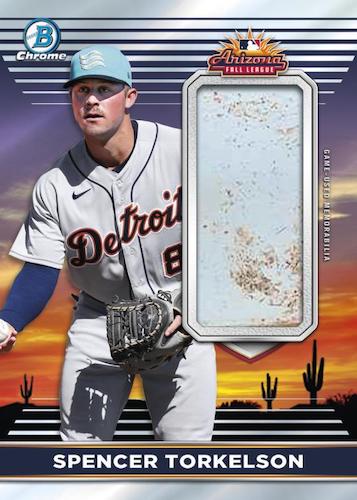
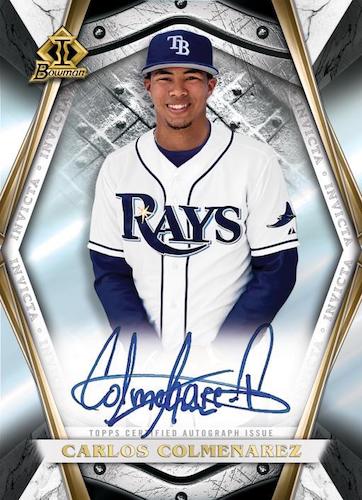
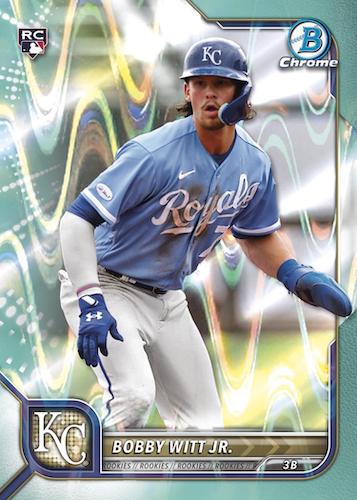
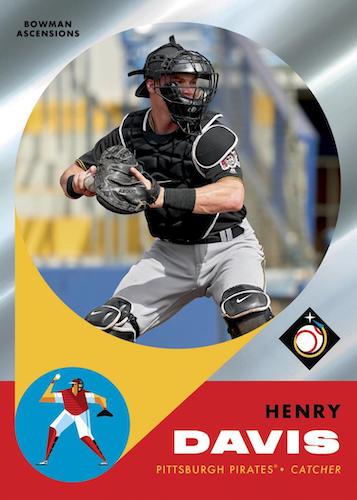
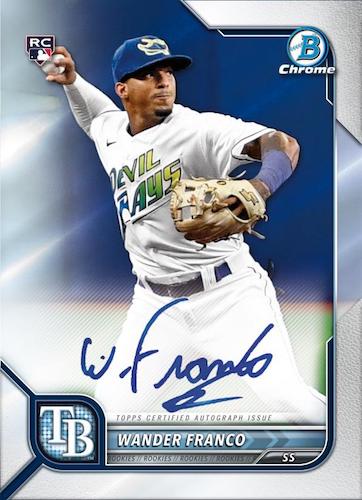
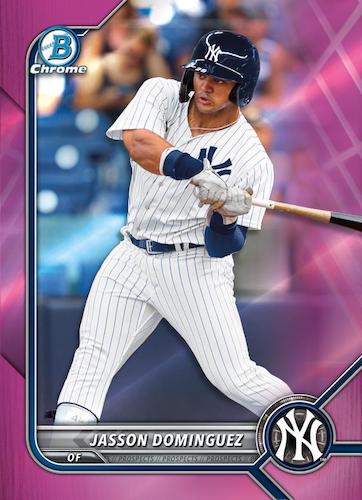
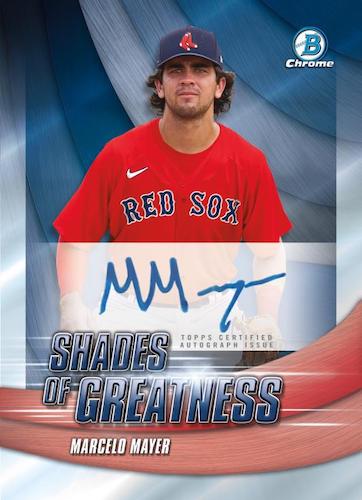
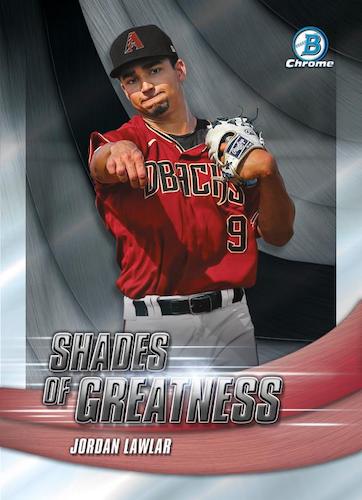
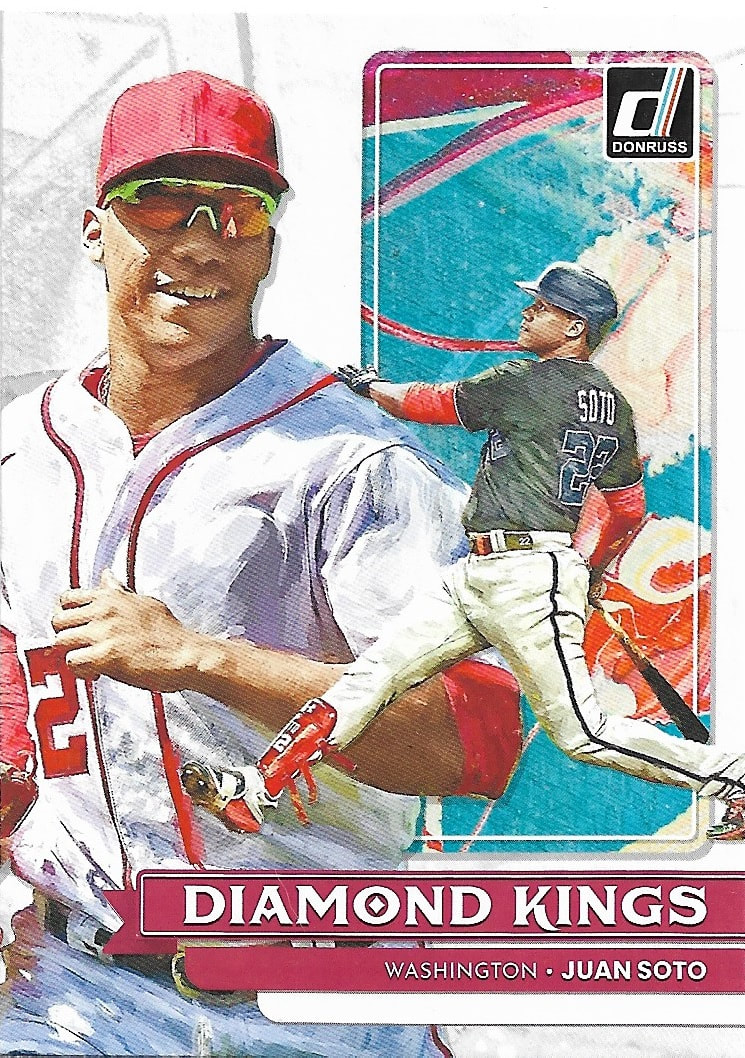
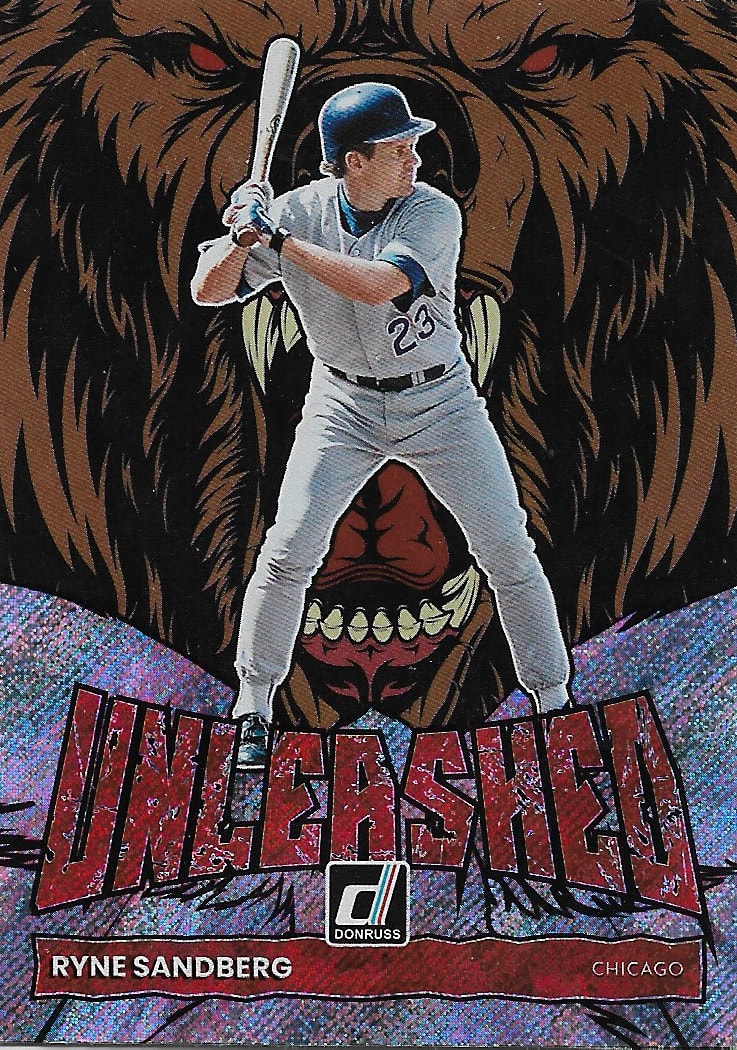
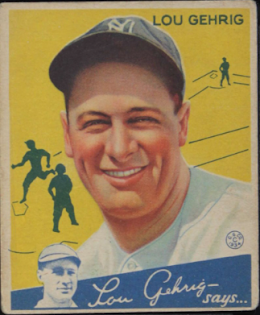
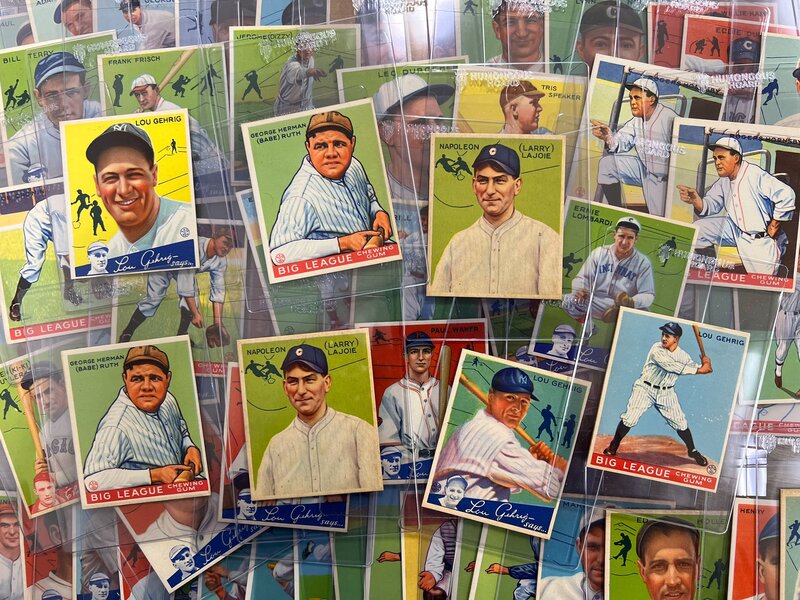
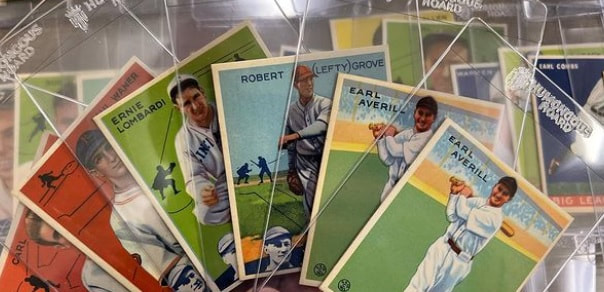
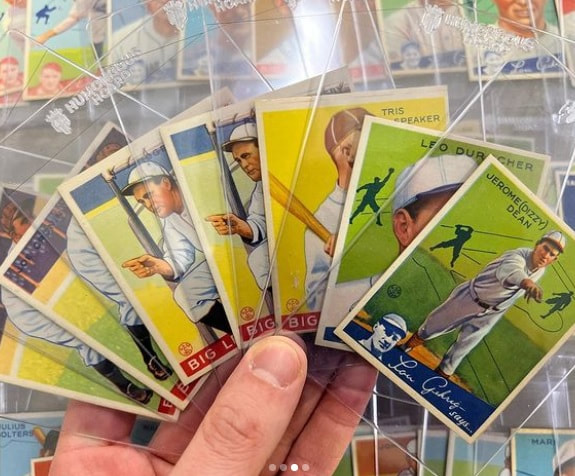
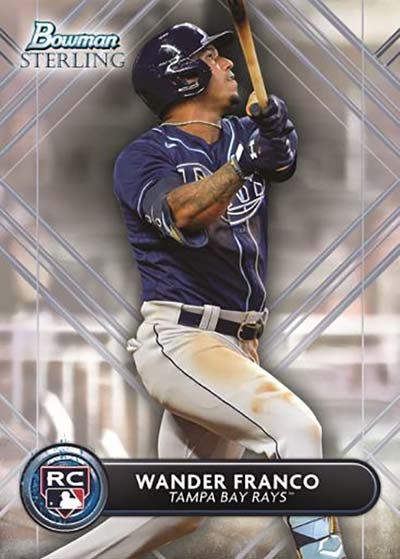
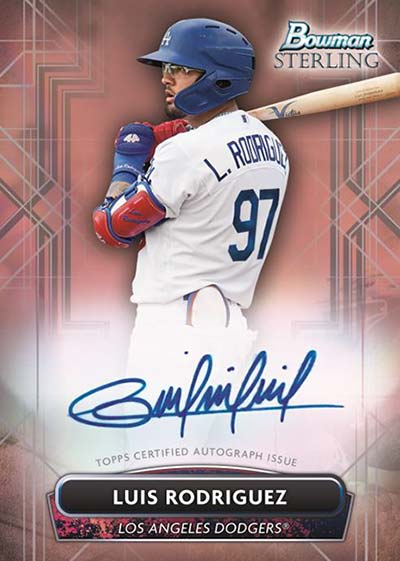
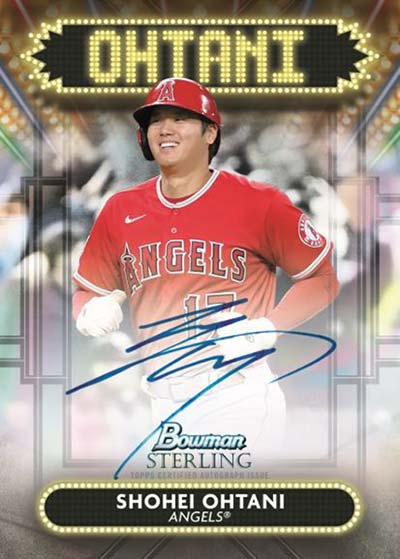
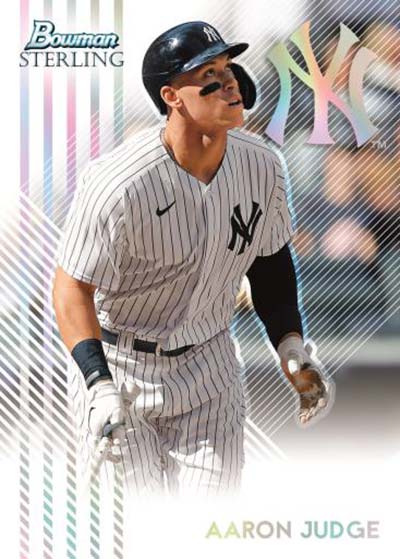
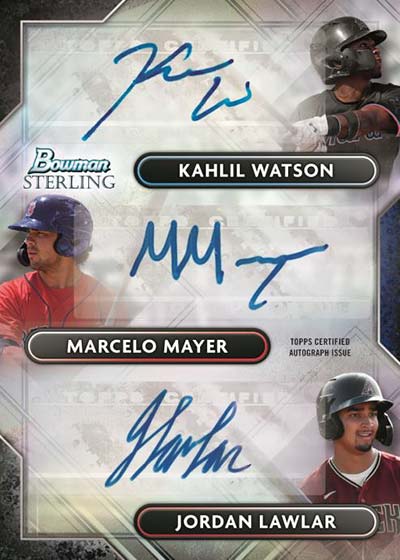
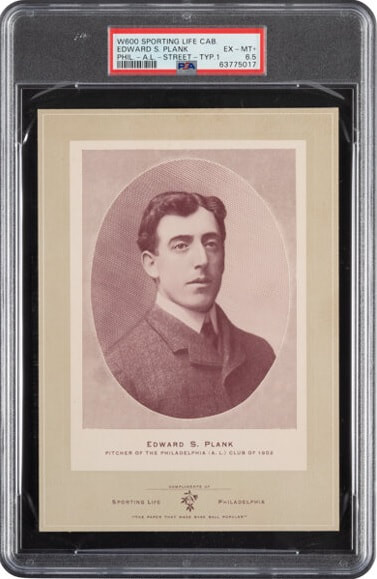
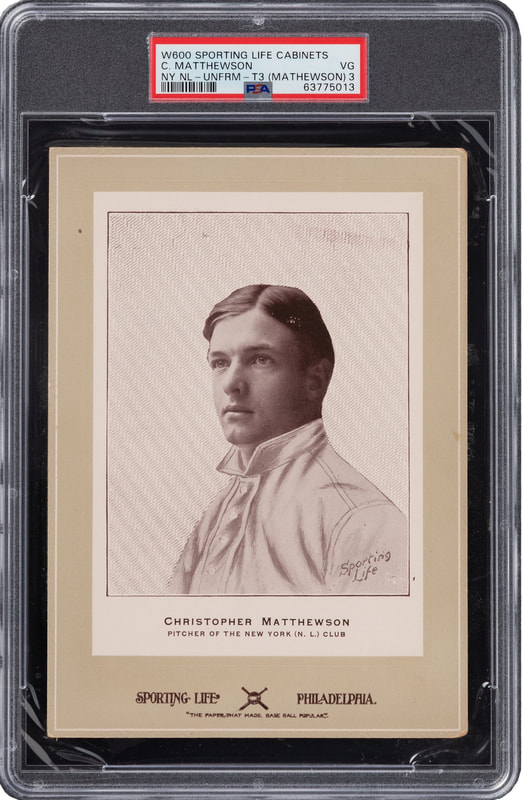
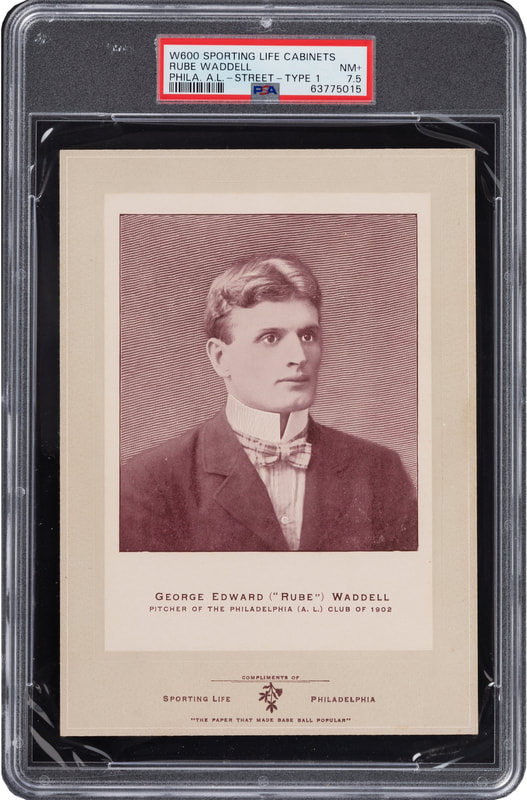
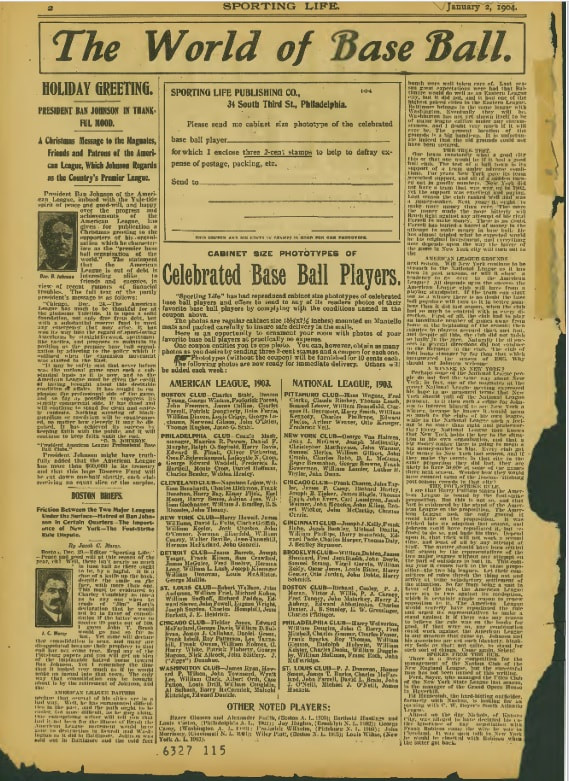
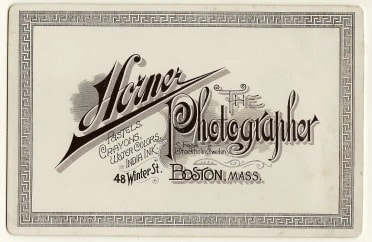

 RSS Feed
RSS Feed
